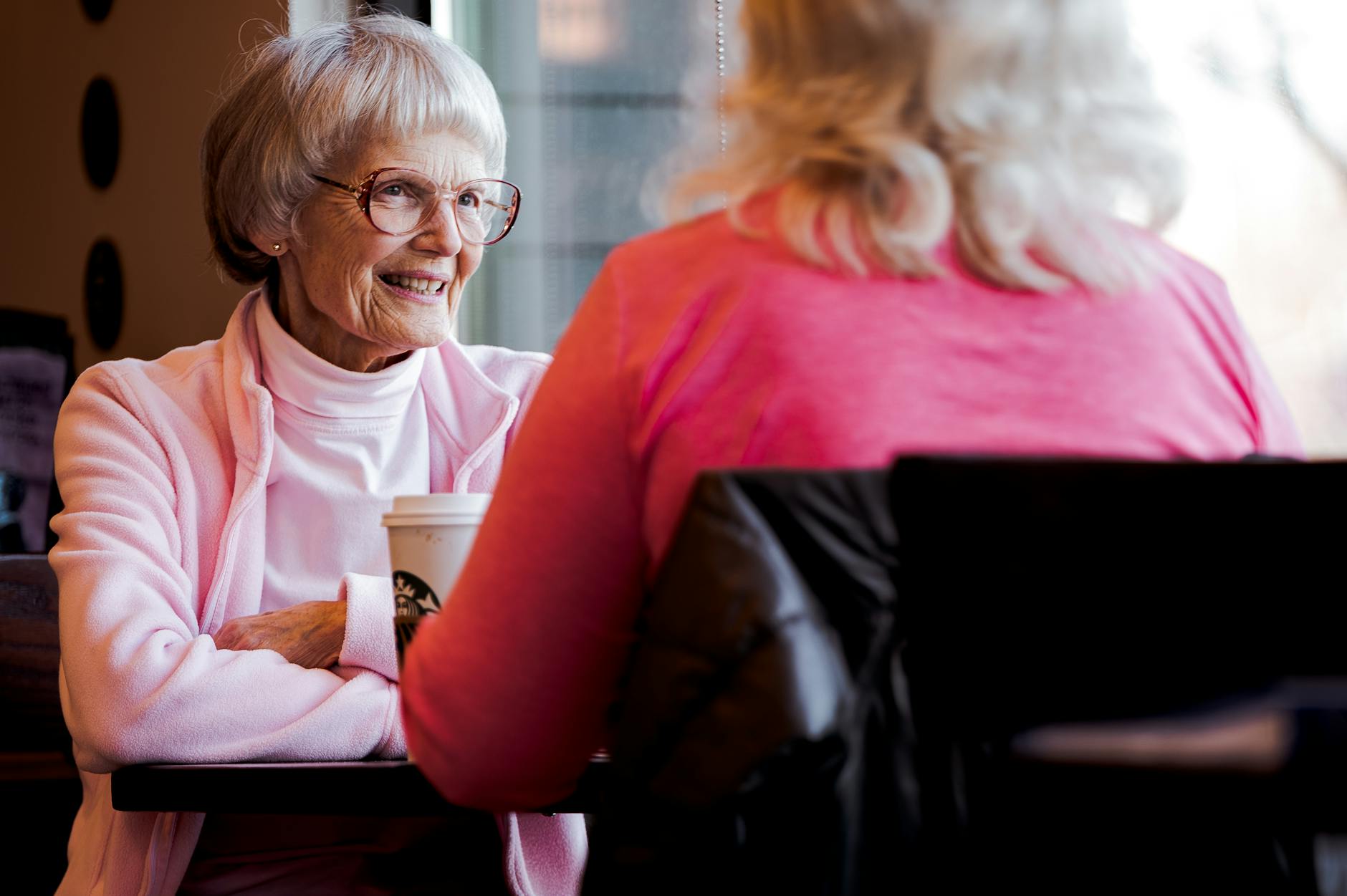Moving Elderly Parents In With You
Discover the key considerations and adjustments to ensure their safety, well-being, and independence.

Considering Moving Elderly Parents
Making the decision to move elderly parents in with you is a significant step that comes with its own set of challenges and considerations. Caregivers must carefully evaluate the implications of this decision before proceeding.
Challenges and Considerations
Moving elderly parents in with you can present various challenges, especially when dealing with issues such as dementia, difficult personalities, and complex behaviors [1]. It's important to assess the needs and limitations of your parents to ensure their safety, comfort, and overall well-being.

Some key considerations to keep in mind include:
- Space and Privacy: Evaluate whether your home has adequate space to accommodate your parents' needs, including their own personal space and privacy. Rearranging rooms and creating a designated area for them can help provide a sense of independence.
- Healthcare Requirements: Determine the level of healthcare assistance your parents require. If they have specific medical conditions or mobility issues, it may be necessary to make modifications to your home to ensure their safety.
- Personal Dynamics: Consider how living together will impact your family dynamics and relationships. Open and honest communication is key to establishing boundaries, addressing conflicts, and maintaining a harmonious living environment.
Financial Implications
When contemplating the decision to move elderly parents in with you, it's important to consider the financial implications. Caregivers often make financial sacrifices to accommodate the costs associated with caring for an aging relative. According to Senior Navigator, caregivers spend an average of $5,500 per year out of pocket, while those who live with their parents spend nearly $15,000 per year for care.
While moving an elderly parent in with you may be a more cost-effective alternative compared to nursing homes or assisted living facilities, it's essential to weigh the financial costs against the benefits. The average cost of a nursing home is approximately $80,000 per year, while an assisted living facility costs about $43,000 per year on average. Assess your own financial situation and consider consulting with a financial advisor to determine the feasibility and impact of this decision.
By carefully considering the challenges and implications associated with moving elderly parents in with you, you can make an informed decision that prioritizes the safety, well-being, and overall quality of life for both yourself and your parents.
Home Modifications for Elderly Care
When considering moving elderly parents in with you, it's essential to make appropriate modifications to your home to ensure their safety and comfort. This section will explore two important aspects of home modifications for elderly care: room rearrangement tips and assistive technology integration.
Room Rearrangement Tips
Rearranging rooms to suit reduced mobility is a crucial step when accommodating elderly parents in your home. Consider the following tips to create a more accessible living environment:
- Declutter: Remove unnecessary items and furniture to create more open space, reducing the risk of tripping hazards and improving maneuverability.
- Barrier-Free Entrances and Exits: Ensure that entrances and exits are free from barriers such as rugs or uneven flooring. Install ramps or lifts if necessary to provide easy access for wheelchairs or walkers.
- Easy-to-Operate Doors: Check that all doors, including sliding doors, are easy to open and close. Consider installing lever-style door handles for easier gripping.
- Improved Lighting: Adequate lighting throughout the house is essential for elderly individuals with reduced vision. Install brighter lights, especially in hallways, staircases, and bathrooms, to enhance visibility and reduce the risk of falls.
- Grab Bars and Handrails: Install grab bars and handrails in areas where additional support is needed, such as bathrooms and staircases. These can significantly enhance stability and prevent accidents.
Remember, the specific modifications needed will depend on your parents' mobility and health conditions. Consulting with a professional or occupational therapist can provide valuable guidance tailored to your parents' unique needs.
Assistive Technology Integration
Assistive technology plays a crucial role in helping elderly individuals live independently for longer periods. By integrating the right tools and devices, you can enhance their safety and well-being. Consider the following options:
- Voice-Activated Assistants: Devices like smart speakers or voice-activated assistants can assist with tasks such as setting reminders, making phone calls, or playing music, providing convenience and reducing the reliance on manual assistance.
- Bathroom Mobility Aids: Installing bathroom mobility aids, such as grab bars, shower chairs, or hand-held showerheads, can significantly improve safety and accessibility in the bathroom. Solutions like the Showerbuddy range of products from Showerbuddy can assist with transfers, bathing, toileting, and more, reducing the need for manual lifts [3].
- Smart Home Security Systems: Implementing a smart home security system with features like motion sensors, video doorbells, and emergency alerts can provide peace of mind and enhance home safety.
- Medical Alert Systems: Consider subscribing to a reliable medical alert system that allows your parents to call for help in case of emergencies, providing them with a sense of security and ensuring prompt assistance when needed.
When integrating assistive technology, it's important to ensure proper use and understanding. Familiarize your parents with the devices and provide any necessary training to maximize their benefits.
By implementing room rearrangement tips and integrating assistive technology, you can create a safer and more comfortable living environment for your elderly parents. These modifications can enhance their independence and allow them to navigate their new home with greater ease and confidence. Remember to consider the costs associated with home modifications and explore available resources and assistance programs that may help alleviate some of the financial burdens [4].
Support Systems for Caregivers
Taking on the responsibility of caring for elderly parents can be challenging, both emotionally and physically. It is crucial for caregivers to have a strong support system in place to ensure they can provide the best care possible. This support can come in the form of engaging external services and sharing caregiving duties.
Engaging External Services
Engaging external services can help caregivers manage the demands of caring for elderly parents. These services can provide a range of assistance, from professional home healthcare to respite care, depending on the specific needs of the elderly parents and the caregiver's circumstances.
External services can offer valuable support by providing professional caregivers who are trained to assist with activities of daily living, medication management, and medical monitoring. Additionally, they can offer companionship and social interaction, which is beneficial for both the elderly parents and the caregivers.
When considering external services, it's important to evaluate factors such as availability, proximity, and budget. Research local service providers, read reviews, and consult with healthcare professionals or support groups to find reliable and reputable services that align with your needs.
Sharing Caregiving Duties
Caring for elderly parents can be overwhelming when shouldered solely by one person. Sharing caregiving duties among family members or close friends can help distribute the responsibilities and provide much-needed support. This shared approach allows caregivers to have regular breaks, reduce stress, and maintain their own well-being.
Communication and coordination among family members are essential when sharing caregiving duties. Establishing a schedule or a system that outlines each person's responsibilities and availability can help ensure that the care provided is consistent and reliable. Regular family meetings or check-ins can also be beneficial for addressing any concerns or adjusting the caregiving plan as needed.
Sharing caregiving duties not only helps alleviate the burden on individual caregivers but also allows different family members to contribute their own strengths and abilities to provide comprehensive care for elderly parents.
By engaging external services and sharing caregiving duties, caregivers can build a strong support system that enhances their ability to care for their elderly parents effectively. It is important for caregivers to remember that they are not alone in this journey and that seeking support is crucial for their own well-being and the well-being of their loved ones.
For more information on the challenges and considerations when moving elderly parents, as well as the financial implications, refer to the corresponding sections in this article. Additionally, consider exploring resources and support groups in your local community for further assistance and guidance.
Ensuring Safety and Independence
When moving elderly parents into your home, ensuring their safety and independence becomes a top priority. Two key aspects to consider are the importance of mobility equipment and the utilization of assistive technology.
Mobility Equipment Importance
The right mobility equipment can significantly impact the ability of elderly individuals to stay in their own homes rather than moving into retirement care facilities. Products such as Showerbuddy solutions, which assist with transfers, bathing, toileting, and more, can reduce the need for manual lifts and make daily tasks more manageable.
Mobility aids, such as grab bars, ramps, and stairlifts, can also greatly enhance safety and accessibility within the home. Installing these aids in key areas can prevent accidents and provide support for individuals with mobility challenges. It's essential to assess the specific needs of your elderly parents and consult with professionals to determine the appropriate mobility equipment for your home.
Utilizing Assistive Technology
Assistive technology plays a crucial role in helping elderly individuals live independently for longer periods. From simple devices like voice-activated assistants to more sophisticated solutions like bathroom mobility aids, the right use of assistive technology can enhance independence and safety.
Voice-activated assistants, such as Amazon Echo or Google Home, can assist with tasks like setting reminders, playing music, and controlling home devices through voice commands. Smart home technology, such as automated lighting and temperature control, can also make daily living more convenient for elderly parents.
To ensure the effective utilization of assistive technology, it's important to familiarize yourself and your parents with the devices and their functionalities. Provide clear instructions and ongoing support to help them adapt to and benefit from these technological solutions.
By prioritizing mobility equipment and utilizing assistive technology, you can create a safer and more independent environment for your elderly parents. These measures can enhance their quality of life and provide peace of mind for both you as a caregiver and for them as they age in the comfort of their own home.
Social and Emotional Well-being
When considering moving elderly parents into your home, it's important to address their social and emotional well-being as they navigate this significant life change. Here are two key aspects to consider: addressing loneliness and providing social network support.
Addressing Loneliness
Isolation and feelings of loneliness are common among older adults who move into their children's homes. It's crucial to recognize the potential impact of loneliness on their overall well-being. Studies have shown that isolated seniors are more likely to experience depression, cognitive decline, and are more vulnerable to heart disease compared to their socially connected peers.
To address loneliness, it's important to actively engage your elderly parents in social activities and help them build connections. Here are a few strategies to consider:
- Encourage participation in local adult daycare facilities or senior centers. These facilities often offer a range of activities, personal care services, cultural events, and transportation services to combat loneliness and provide socialization opportunities [2].
- Arrange regular visits or outings with friends, neighbors, or other family members. Encouraging social interaction outside the home can help alleviate feelings of isolation.
- Explore online communities and social media platforms specifically designed for seniors. These platforms can provide a virtual space for connection and engagement with others.
By actively addressing loneliness and promoting social engagement, you can help enhance your parents' overall well-being and quality of life.
Social Network Support
In addition to addressing loneliness, it's important to provide a strong social network of support for your elderly parents. This network can help them feel connected, supported, and valued. Here are a few ways to provide social network support:
- Encourage regular communication with family members and friends through phone calls, video chats, or in-person visits.
- Foster connections with neighbors and community members. Encourage your parents to participate in community events, clubs, or groups that align with their interests.
- Seek support from local caregiver support groups or organizations. These groups can provide a safe space for sharing experiences and advice, as well as emotional support for caregivers.
Creating and maintaining a robust social network for your elderly parents can contribute to their overall well-being and help them feel connected to the world around them.
Remember, each individual's needs and preferences may vary, so it's important to listen to your parents and involve them in decisions regarding their social and emotional well-being. By addressing loneliness and providing social network support, you can create a positive and fulfilling environment for your elderly parents as they transition into living with you.
Lifestyle Changes and Adaptations
When you make the decision to move your elderly parents into your home, it's important to recognize that this transition may require some lifestyle changes and adaptations. Adjusting meal preferences and compromising on household rules are just a couple of aspects that may need consideration.
Adjusting Meal Preferences
Moving elderly parents into your home often means accommodating their dietary needs and preferences. It's important to have open and honest conversations about their dietary restrictions, food allergies, and any specific meal requirements. By understanding their nutritional needs, you can make appropriate adjustments to your family's meal planning.
Incorporating their preferences into your existing meal routine can help them feel more comfortable and at home. Consider involving them in the meal planning process and asking for their input on menus. Additionally, you may need to become familiar with special diets tailored for seniors, such as low-sodium or diabetic-friendly meal options.
Compromising and New Rules
When merging households, it's natural for different generations to have different lifestyles and routines. Adjusting to these changes requires compromise and establishing new rules that ensure a harmonious living environment for everyone involved.
The process of developing new household rules should be a collaborative effort. Sit down with your elderly parents and discuss their specific needs, routines, and preferences. Consider factors such as noise levels, privacy, and daily schedules. By involving them in this process, you can create a sense of ownership and make adjustments that will accommodate their needs without disrupting the overall household dynamics.
It's important to approach rule adjustments with empathy and understanding. Remember that your elderly parents may have been used to living independently and may need time to adapt to the new environment. By maintaining open lines of communication and showing flexibility, you can foster a positive living arrangement for everyone.
In addition to adjusting meal preferences and establishing new rules, it's crucial to prioritize the social and emotional well-being of your elderly parents. Addressing feelings of loneliness and providing opportunities for social interaction are essential aspects of their overall care. Consider exploring local senior centers, adult daycare facilities, or online communities that can provide social networks and activities to help combat isolation. For more information on these topics, you can refer to our articles on exercise videos for seniors and signs your aging parent needs help.
Remember, moving elderly parents into your home requires willingness to adapt and make necessary changes. By approaching lifestyle adjustments with empathy, communication, and compromise, you can create a supportive and nurturing environment that meets the needs of your elderly parents while maintaining the well-being of your entire family.
References
[1]: https://www.agingcare.com/questions/parents-live-with-me-pitfalls-167798.htm
[2]: https://seniornavigator.org/article/66967/10-factors-consider-moving-your-elderly-parents
[3]: https://shower-buddy.com/blogs/news/5-ways-to-make-a-home-easier-for-elderly-parents
[4]: https://www.aarp.org/caregiving/home-care/info-2019/safety-tips.html
[5]: https://www.humangood.org/resources/senior-living-blog/things-to-consider-before-moving-parents-into-your-home

































































































